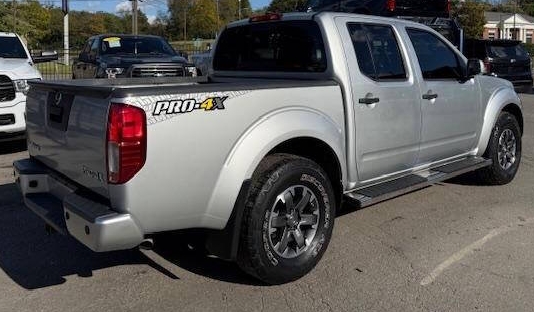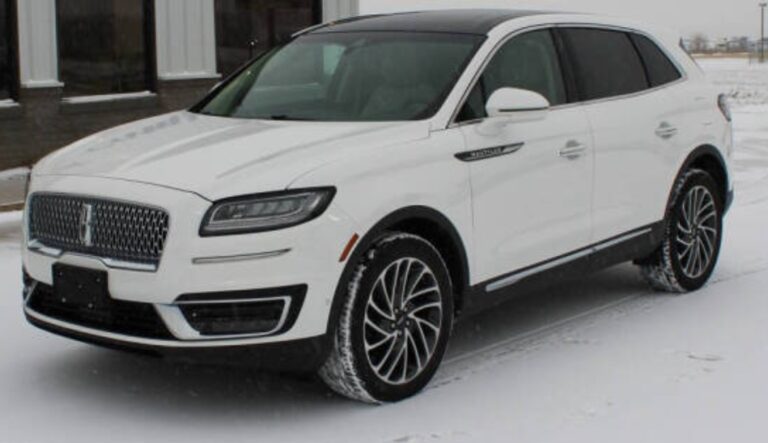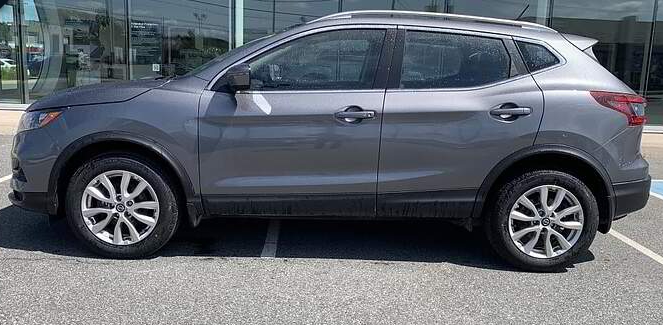The Steadfast Workhorse: Tracing the Evolution of the Nissan Frontier
The pickup truck is an American archetype, a symbol of utility, ruggedness, and the open road. While names like F-150 and Silverado often dominate headlines, a quieter, yet equally vital, force has been steadily carving its niche for decades: the Nissan Frontier. More than just a tool for hauling and towing, the Frontier represents Nissan’s commitment to a capable, reliable, and increasingly sophisticated mid-size truck, consistently evolving to meet the changing demands of its drivers. From its humble beginnings as the D21 Hardbody to its modern, reimagined fifth generation, the Frontier’s journey is a testament to enduring design and a dedication to the core principles of a truck.
The Genesis: The D21 Hardbody (1986-1997)
While the “Frontier” name wouldn’t appear until later, the lineage of Nissan’s mid-size pickup truck truly begins with the Nissan D21, affectionately known as the “Hardbody.” Introduced in 1986 to replace the Datsun 720 truck, the Hardbody was built on a robust, body-on-frame chassis, a foundational element that would define its successors. It was a no-nonsense machine, designed for durability and utility.
The Hardbody was offered in a variety of configurations to suit different needs. Initially, it was available as a Regular Cab and a King Cab (which offered small, rear-facing jump seats). Engine options included a 2.4-liter inline-four and, for a period, a 3.0-liter V6. Transmission choices typically consisted of a 5-speed manual and a 4-speed automatic.
Trim levels, while not as extensively differentiated as modern trucks, generally included a base model and a more equipped XE trim. Later in its production run, Nissan introduced sportier variants like the SE and the off-road focused 4X4 models, often featuring enhanced suspension and more aggressive styling. The Hardbody’s reputation for reliability and its relatively affordable price point garnered it a loyal following, laying the groundwork for future Nissan trucks.
.

.
The Birth of the Frontier: Navigating the Nineties and Beyond (1998-2004) – The First Generation
The year 1998 marked a significant turning point with the rebranding of Nissan’s mid-size pickup as the Nissan Frontier. This first generation, still riding on a modified version of the D21 chassis, embraced a slightly more modern aesthetic while retaining its workhorse DNA. The exterior design became more rounded and aerodynamic, reflecting the prevailing design trends of the late 1990s.
The Regular Cab and King Cab body styles continued, with the King Cab still offering its signature small rear seats. A significant addition for this generation was the introduction of a Crew Cab model in 2001, a groundbreaking move that offered four full-sized doors and a more spacious rear seating area, catering to families and those who needed to transport more passengers.
Engine options saw an upgrade. The 2.4-liter four-cylinder engine remained a staple, offering fuel efficiency and adequate power. However, the V6 engine was enlarged to 3.3 liters, providing a noticeable boost in performance for towing and hauling. This V6 was also available with a supercharger in later model years, offering an impressive power increase for its time.
Trim levels for the first-generation Frontier became more defined. The base model typically offered essential features, while the XE trim added a bit more comfort and convenience. The SE trim became the more popular choice, often including alloy wheels, power accessories, and upgraded interior appointments. For those seeking off-road prowess, the 4X4 models remained a strong option, often equipped with specific suspension components and drivetrain enhancements. The supercharged V6 was typically found in higher-end SE or a dedicated S/C (Supercharged) trim.
The first-generation Frontier proved to be a capable and competent truck, building on the Hardbody’s legacy of dependability. It successfully transitioned Nissan’s mid-size pickup into the new millennium, albeit with a more refined and versatile offering.
A Bold Leap Forward: The Second Generation (2005-2021) – The Long Haul
The year 2005 ushered in a revolution for the Nissan Frontier. The second generation was a complete redesign, built on an all-new F-Alpha platform shared with the Nissan Xterra and later the Nissan Pathfinder. This robust platform provided a stiffer frame, improved ride quality, and enhanced off-road capability. The design also became more aggressive and muscular, reflecting the dominant styling cues of modern pickups.
This generation saw the consolidation of body styles into a King Cab (still with its small rear seats) and a Crew Cab (now with four full-sized doors and a more usable rear bench). The bed lengths also offered more variety, with standard and long-bed options available for both cab configurations.
Engineered for serious work, the second-generation Frontier offered two primary powertrains. The base engine was a 2.5-liter four-cylinder, providing a more efficient option for everyday tasks. However, the real star was the 4.0-liter V6, a potent engine that delivered robust power for towing and hauling, making the Frontier a true contender in its class. Transmission choices included a 6-speed manual and a 5-speed automatic.
The trim level hierarchy for the second-generation Frontier became more elaborate, catering to a broader range of preferences:
- S: The entry-level workhorse, offering essential features and a no-frills approach.
- SE: A step up, adding more comfort and convenience features, often including upgraded audio and interior appointments.
- LE (later SV): This trim level provided a more premium experience with features like leather upholstery, navigation, and advanced climate control. The “LE” designation was later replaced by “SV” (Special Value) in some model years, often offering a similar package of amenities.
- PRO-4X: This was the ultimate off-road variant. The PRO-4X was equipped with an electronic locking rear differential, skid plates, Bilstein shocks, and aggressive all-terrain tires, making it a formidable machine for tackling challenging terrain.
Throughout its exceptionally long production run (2005-2021), the second-generation Frontier received several minor updates and facelifts, including revised grilles, headlights, and interior technology. However, the core platform and powertrains remained largely the same, a testament to their inherent strength and durability. This longevity also meant that the Frontier became known for its excellent value retention and its ability to withstand the rigors of daily use and demanding work. While some competitors moved to more car-like interiors and advanced driver-assistance systems, the Frontier maintained its focus on fundamental truck capability and mechanical robustness, appealing to a dedicated customer base who valued its no-nonsense approach.
A New Era Dawns: The Fifth Generation (2022-Present) – The Reimagined Frontier
After a remarkable 17-year run, the second-generation Frontier was finally retired, giving way to an all-new, fifth-generation model for the 2022 model year. This redesign represented a significant leap forward in terms of technology, safety, and styling, while crucially retaining the core values of capability and reliability that the Frontier has always embodied.
The exterior styling of the fifth-generation Frontier is a modern interpretation of classic Nissan truck design cues, featuring a bolder grille, sharper lines, and a more imposing stance. It successfully blends a contemporary look with the ruggedness expected of a pickup.
The body styles continue with the King Cab and Crew Cab configurations, offering a choice in passenger capacity and cargo space. Bed lengths remain a practical consideration, with standard and long-bed options available.
Under the hood, a powerful new 3.8-liter V6 engine becomes the standard and only engine option. This engine, which debuted in the outgoing model as an option, delivers a robust 310 horsepower and 281 lb-ft of torque, providing ample power for towing, hauling, and off-road adventures. It is paired exclusively with a 9-speed automatic transmission, offering smoother shifts and improved efficiency.
The trim levels for the fifth-generation Frontier build upon the legacy of its predecessor, offering a clear progression of features and capabilities:
- S: The base model provides a solid foundation with essential truck features and newly standard advanced safety technologies.
- SV: This trim adds a significant boost in comfort and convenience, often including upgraded seating, infotainment features, and exterior enhancements.
- PRO-X (2WD) and PRO-4X (4WD): These trims are the spiritual successors to the previous PRO-4X, focusing on enhanced off-road performance. They feature specialized suspension tuning, all-terrain tires, and underbody protection, with the PRO-4X adding the electronic locking rear differential that has become a hallmark of Nissan’s off-road prowess.
- PRO-4X Luxury Package: For those seeking even more refinement, this optional package adds premium features like leather-appointed seating, a premium audio system, and a host of advanced safety and convenience technologies.
The fifth-generation Frontier is a testament to Nissan’s commitment to the mid-size truck segment. It represents a thoughtful evolution, integrating modern technology and design without sacrificing the fundamental strengths that have made the Frontier a trusted name for decades. It is a truck designed to work, to play, and to endure, continuing the legacy of the steadfast workhorse that is the Nissan Frontier.
Conclusion: A Legacy of Reliability and Capability
The evolution of the Nissan Frontier is a story of adaptation and perseverance. From the utilitarian Hardbody to the rugged and refined fifth generation, Nissan has consistently delivered a mid-size pickup truck that prioritizes reliability, capability, and value. While the automotive landscape has shifted dramatically over the years, the Frontier has remained a steadfast option for those who need a truck that can get the job done, whether it’s navigating city streets, tackling tough job sites, or venturing off the beaten path. Its enduring appeal lies in its no-nonsense approach, its robust engineering, and its unwavering commitment to the core principles of what a pickup truck should be. The Frontier may not always grab the loudest headlines, but its quiet competence and enduring legacy have firmly cemented its place as a crucial player in the fiercely competitive world of mid-size trucks.







